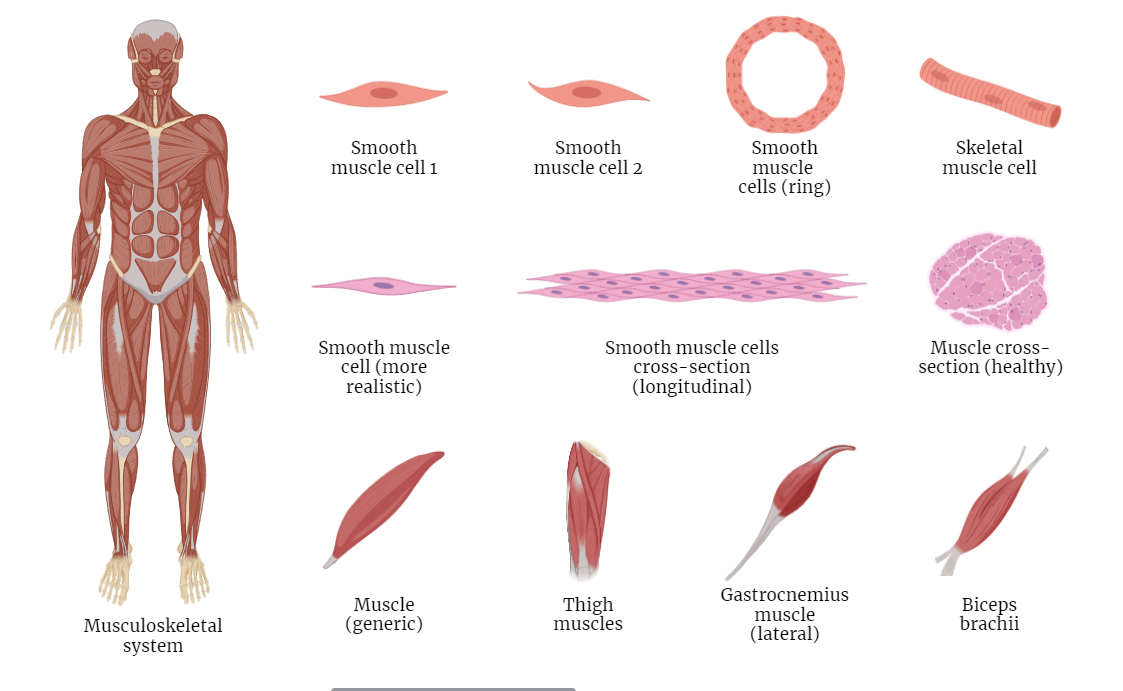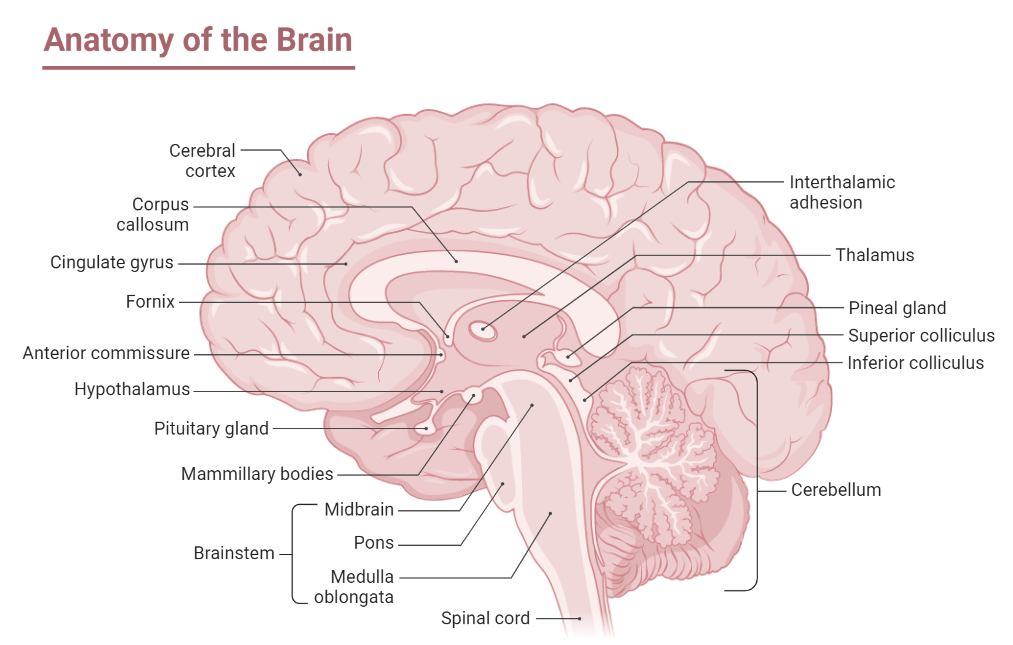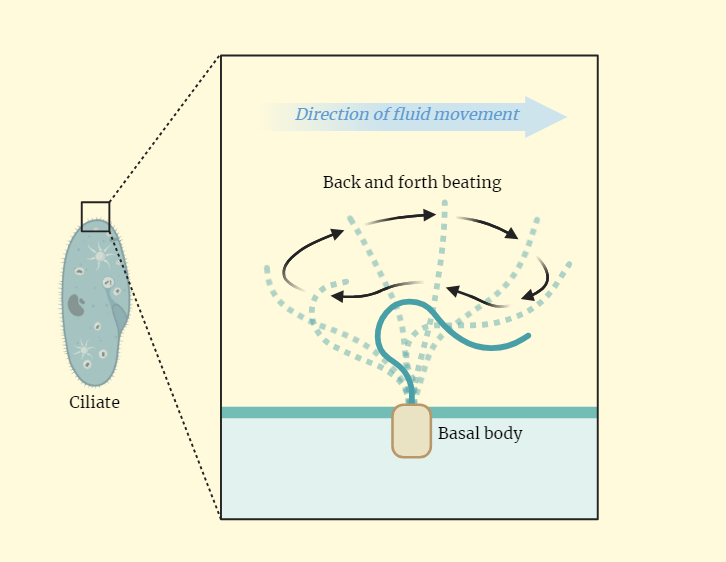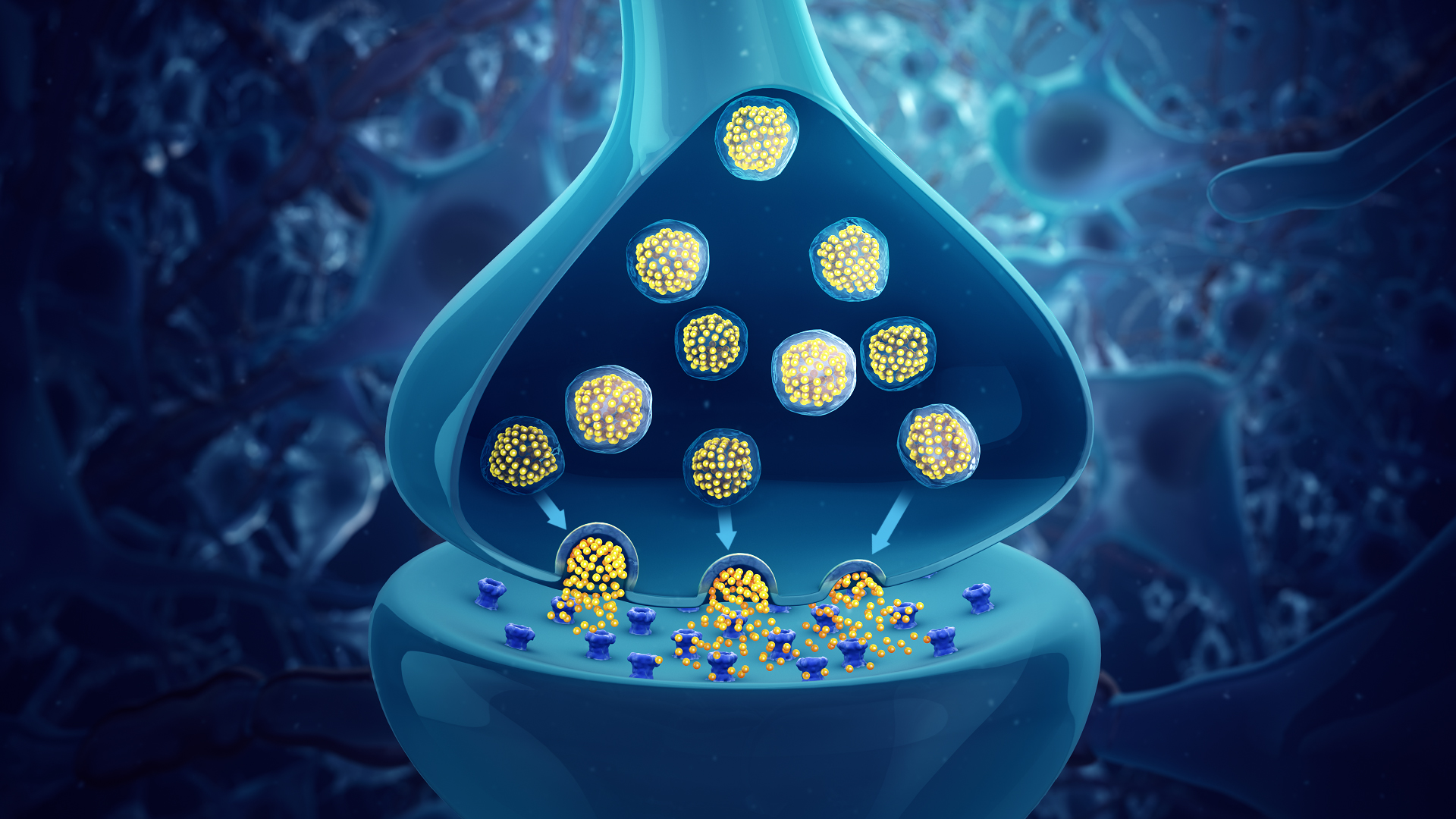-

Skeletal muscle organization
Introduction to skeletal muscle organization Gross Anatomy Muscle Fibers Myofibrils Detailed Sarcomere Structure Molecular Components of Muscle Contraction Contraction Mechanism These details provide a more comprehensive understanding of the sarcomere’s structure and the molecular components involved in muscle contraction. If you need further clarification or additional information, feel free to ask! Neuromuscular Junction Excitation-Contraction Coupling…
-

Membrane Potential
The membrane potential is a fundamental concept in cellular physiology, playing a crucial role in the proper functioning of cells. It refers to the electrical potential difference across a biological cell membrane, which is maintained by ion gradients. These gradients are created by the selective permeability of the membrane to ions such as sodium, potassium,…
-

Applications of Ramachandran Plot
Discover the diverse applications of the Ramachandran plot in protein research. From predicting protein structures to identifying binding sites and analyzing mutations, this powerful tool aids in validating structures, comparing conformations, and uncovering novel protein structures. By utilizing the Ramachandran plot alongside other techniques, researchers can gain a comprehensive understanding of protein structure and flexibility.
-

Human Brain
The brain is the most sophisticated organ in the human body, directing and coordinating all of the body’s operations. It is divided into three sections: the forebrain, the midbrain, and the hindbrain. Forebrain Thalamus and hypothalamus Midbrain Cerebellum To summarise, the brain is a highly complex and detailed organ, with diverse areas and structures specialised…
-

The Cycle of Life in Frogs
Delve into the intricate life cycle of the leopard frog Rana pipiens, from the inception of gametogenesis and fertilization to the transformative journey of metamorphosis. Explore the stages of cleavage, gastrulation, and organogenesis that shape this remarkable amphibian’s development. Witness the astonishing metamorphosis from tadpole to land-dwelling adult frog. This essay provides a captivating insight…
-

The Cycle of Life
Embark on a journey through the intricate cycle of life, spanning the developmental odyssey of animals. Explore the stages from fertilization to birth, metamorphosis, and gametogenesis. Witness how cells rearrange, germ layers form, and organs emerge during organogenesis. Uncover the transformative power of metamorphosis and the pivotal role of gametogenesis in perpetuating life. This overview…
-

Structure of Mammalian Sperm
Delve into the intricate world of mammalian sperm structure, where specialized cells undergo complex development to fulfill their crucial role in fertilization. Explore the components that make up sperm – the streamlined nucleus, enzymatic acrosome, and propelling flagellum. Uncover the dynamic process of capacitation, fine-tuning sperm for successful egg binding and fertilization. Discover how dynein…
-

Ciliary locomotion
Explore the fascinating world of ciliary locomotion, where intricate hair-like structures known as cilia orchestrate a symphony of coordinated movement. These remarkable projections, found on certain cell surfaces, serve as nature’s propellers, driving processes vital to life. Delve into the mechanics of cilia, composed of microtubules arranged in an elegant “9+2” pattern. These structures, anchored…
-
Flagellary locomotion in euglena
Dive into the captivating realm of flagellar locomotion in Euglena, where whip-like flagella orchestrate intricate movements. Explore the molecular symphony of dynein motor proteins propelling these single-celled organisms, enabling navigation, feeding, and light-sensing. Uncover the secrets of metachronal waves and the elegant “9+2” microtubule arrangement. Join us in deciphering the remarkable world of flagellar dynamics…
-
Ciliary Locomotion in Paramoecium
Embark on a journey into the intricate world of ciliary locomotion in Paramoecium, where tiny hair-like cilia orchestrate remarkable movements. Explore the molecular choreography driven by dynein motor proteins, propelling this single-celled wonder through water. Delve into the “9+2” microtubule arrangement, unveiling the metachronal wave phenomenon. Witness cilia’s multifaceted role – from aquatic navigation to…
-

Secondary Sex Determination in Mammals
Explore the intricate realm of secondary sex determination in mammals, where hormones and genetic interplay shape diverse phenotypes. Uncover the two major phases and hormonal cues guiding the development of sexual characteristics. From internal and external genitalia to reproductive ducts, delve into the journey of female and male phenotypes. Discover conditions like pseudohermaphroditism and true…
-

Flagellar movement
Embark on a journey into the world of flagellar movement, where whip-like flagella orchestrate cellular dynamics. Traverse the intricate structure of microtubules, unravel the motor proteins propelling these movements, and decode the biochemical signals triggering their activation. From sperm’s voyage through the female reproductive tract to bacteria’s quest for sustenance, discover how flagella’s synchronized beats…
-

Human Nervous System
The human nervous system, a marvel of complexity, orchestrates communication and control throughout the body. Delve into its realms, from the intricate structure of neurons to the profound functions of the brain. Explore how sensory perception and motor responses are coordinated, while uncovering the mechanisms behind learning and memory. Discover the interplay of the central…
-

Adrenal gland
The adrenal glands, located on top of each kidney, are essential endocrine organs responsible for producing and releasing hormones that regulate various physiological processes. This in-depth study note explores their location, histology, functions, and clinical significance. Understanding the adrenal glands is crucial for comprehending their role in maintaining stress response, metabolism, electrolyte balance, and blood…
-

Renin-Angiotensin System (RAS)
Explore the intricate workings of the Renin-Angiotensin System (RAS), a crucial endocrine system responsible for blood pressure regulation and fluid balance. Dive into the functions of renin, angiotensin I and II, and their role in vasoconstriction and aldosterone release. Discover the clinical significance of RAS dysregulation and the use of RAS inhibitors in managing hypertension…
-

Kidney Anatomy
Dive into the intricate anatomy of the human kidney and explore its structure, including the renal cortex, renal medulla, and nephrons. Gain insights into the essential functions of the kidneys and their role in maintaining fluid balance. Understand the significance of the kidney’s blood supply and its impact on overall health.
-

Nephron – The Functional Unit of the Kidney
Explore the intricate details of the nephron, the functional unit of the kidney responsible for filtration, reabsorption, and secretion. Gain a comprehensive understanding of its structure, including the renal corpuscle and renal tubule. Discover the vital functions of the nephron in maintaining fluid and electrolyte balance, and its role in urine formation.
-

Mechanism of Urine Formation by the Kidney
Explore the intricate mechanism of urine formation by the kidney, involving filtration, reabsorption, and secretion. Discover how the kidney maintains fluid and electrolyte balance while regulating the concentration and dilution of urine. Understand the role of hormones in this vital physiological process.
-

Osmosis Process
Explore the fascinating process of osmosis, where water moves across membranes to balance solute concentrations. Learn about its principles, factors influencing it, and examples of osmosis in plant roots, kidney function, and cellular dehydration. Gain insights into how osmosis plays a crucial role in maintaining water balance and cellular function in living organisms.
-

Diffusion
Explore the fascinating process of diffusion, where particles naturally move from areas of high concentration to low concentration. Delve into the principles, factors, and examples of diffusion to understand its significance in various scientific fields and everyday phenomena. Gain insights into how temperature, molecular size, and concentration gradients influence this fundamental process.
-

Ramachandran Plot
Explore the Ramachandran plot, a vital tool in structural biology for analyzing protein conformation and folding. Understand the significance of phi and psi angles, interpret the plot, and its applications in protein structure prediction and refinement. Discover how the plot aids in unraveling protein folding pathways and assessing stability. Gain insights into protein engineering and…
-

Organs of the Immune System
In this detailed study, we explore the organs of the immune system and their vital roles in defending against pathogens. From the bone marrow to lymph nodes, discover how these organs facilitate immune responses and maintain overall health. Gain insights into their functions and interconnections for a comprehensive understanding of the immune system’s complexity.
-

Hormonal regulation of Spermatogenesis
The study notes explains the complex process of hormonal regulation of spermatogenesis. It describes how hormones produced by the testes, pituitary gland, and hypothalamus interact with each other and how negative feedback mechanisms play a crucial role in regulating the process. The article also emphasizes the importance of testosterone, FSH, and LH in spermatogenesis and…
-

Mitochondria
Mitochondria are organelles found in eukaryotic cells responsible for generating energy in the form of adenosine triphosphate (ATP). Due to their essential role in cellular respiration, they are often referred to as the powerhouses of the cell. Mitochondria have a unique structure consisting of an outer membrane, intermembrane space, inner membrane, cristae, and matrix. They…
-

Cilia – Structure and functions
Cilia, the hair-like projections found on various cells in the body, are intricate structures with essential functions. From facilitating fluid and particle movement to detecting chemical and mechanical signals, cilia’s roles are diverse and vital. In this chapter, we delve into their structure, types, movement mechanisms, and their crucial contributions to various physiological processes. Understanding…
-

Pathogen Recognition and Innate Immunity
The excerpt delves into the crucial topics of pathogen recognition and innate immunity. It highlights the significance of the innate immune system as the first line of defense against invading pathogens, explaining the role of pathogen recognition receptors (PRRs) in detecting unique pathogen structures known as pathogen-associated molecular patterns (PAMPs). The innate immune response’s rapid…
-

Glycolysis
Glycolysis is a metabolic process that occurs in almost all living organisms. It is a critical pathway that provides energy for cells by breaking down glucose to produce ATP. This article will discuss the definition, equation, enzymes, and steps involved in glycolysis. What is Glycolysis? Glycolysis is a metabolic pathway that converts glucose into pyruvate,…
-

The menstrual cycle
This chapter provides a comprehensive overview of the menstrual cycle from the perspective of endocrinology. It explains the hormonal regulation of the cycle, the four main phases of the menstrual cycle, and the various menstrual cycle disorders that can arise due to hormonal imbalances. The chapter emphasizes the importance of understanding the functioning of the…
-

Insulin Signaling
The Insulin Signaling Study Notes explain the complex process of how the hormone insulin regulates glucose metabolism in cells. The notes cover the interaction of insulin with its receptors, downstream signaling pathways, insulin resistance, and the significance of understanding insulin signaling in various diseases. These notes are essential for students studying physiology, biochemistry, and endocrinology,…
-

Histology of Adrenal Gland
The adrenal glands, also known as the suprarenal glands, are a vital part of our endocrine system. Positioned on top of each kidney, these small triangular-shaped glands produce and release a variety of hormones that play crucial roles in our body’s functioning. The outer region, called the adrenal cortex, consists of three layers that produce…
-

Neurotransmitters
Neurotransmitters are essential chemical messengers that play a crucial role in regulating various physiological processes in the brain and throughout the body. They are involved in functions such as mood, sensation, movement, and cognition. The imbalances or disruptions in neurotransmitter function can lead to a variety of neurological and psychiatric disorders. This article provides an…
-

The Pituitary Gland
The pituitary gland, often called the “master gland,” plays a crucial role in regulating various bodily functions. Located at the base of the brain, it produces hormones that control other endocrine glands and impact processes like growth, metabolism, fertility, and thyroid function. The gland consists of two parts: the anterior pituitary, responsible for hormones like…
-

Micro and macro molecules
Micro and macro molecules are the building blocks of all living organisms. Micro molecules are small and simple in structure, while macro molecules are large and complex. They play crucial roles in metabolic processes, structural organization, and cellular processes. Understanding the properties and functions of these molecules is essential for understanding the complex processes that…
-

The Central Nervous System (CNS)
The central nervous system (CNS) is a vital component of the human body that coordinates and controls all bodily functions. It consists of the brain and spinal cord, which work together to receive and process information from the senses, interpret that information, and send signals to other parts of the body to initiate a response.…
-

Molecular Events of Amphibian Fertilization
Fertilization in amphibians is a fascinating process that involves a unique set of molecular events governing the successful fusion of male and female gametes. Unlike mammals, amphibians employ external fertilization, where the male releases sperm into the surrounding water, and the female lays her eggs. This process requires intricate cellular interactions, starting with chemotaxis and…
-

Proteins
Proteins are crucial biomolecules that perform a vast range of functions in living organisms, from providing mechanical support to catalyzing chemical reactions and protecting against pathogens. Composed of amino acids linked by peptide bonds, proteins come in various types, each with specific roles and characteristics. Structural proteins, such as collagen and elastin, provide support and…
-

The reflex action and reflex ARC
The reflex arc is a rapid and involuntary movement in response to a stimulus, and it is a critical process for the survival of many species, including humans. It involves a series of sensory, motor, and interneurons that allow for a quick and coordinated response to a stimulus. The reflex arc consists of five components,…
-

Carbohydrates
The text provides an overview of carbohydrates, which are a class of biomolecules composed of simple sugars linked together through glycosidic bonds. Carbohydrates play crucial roles in energy storage and transport, as well as in structural support and cell-cell recognition. The three main types of carbohydrates are monosaccharides, disaccharides, and polysaccharides, each with specific functions…
-

The human eye
The human eye is a remarkable organ that enables us to see and interpret visual information. It consists of several structures, including the cornea, iris, pupil, lens, retina, optic nerve, and vitreous humor, which work together to allow us to perceive the world around us. The physiology of the human eye involves complex processes such…
-

Structure of Protein
Proteins are essential macromolecules that play a crucial role in many biological processes. They are made up of amino acids, which are linked together through peptide bonds to form a linear chain. The sequence of amino acids in a protein determines its three-dimensional structure and, consequently, its function. In this study note, we will explore…
-

Mechanism of Vision
The process of vision is complex and involves multiple mechanisms that work together to allow us to see and interpret visual information. From the anatomy of the eye to the neural processing of visual signals, this study chapter explores the different aspects of the mechanism of vision. It covers topics such as light refraction, phototransduction,…
-

Lipids
Lipids are essential macromolecules that play a vital role in various biological processes. This guide explores the structure and function of lipids, their types, and their importance in energy storage, signaling, and cell membrane formation. We discuss the building blocks of lipids, including fatty acids and glycerol, and the types of lipids, including triglycerides, phospholipids,…
-

The Human Ear
The human ear is an intricate and essential part of our auditory system, responsible for our sense of hearing and balance. This study chapter delves into the anatomy of the ear, how we hear sounds, the types of hearing loss, and the management and treatment options available. It also covers common ear disorders and diseases…
-

Enzymes : classification
Enzymes are incredibly important biomolecules that play a crucial role in the proper functioning of living organisms. They catalyze specific chemical reactions, making it possible for various biological processes such as metabolism, DNA replication, and cell signaling to occur efficiently. The structure of enzymes is complex, with different levels of organization, including the primary, secondary,…
-

Mechanism of Hearing
Hearing is a vital sense that allows us to communicate with the world around us. The mechanism of hearing involves the detection of sound waves and their conversion into electrical signals that can be interpreted by the brain. In this study chapter, we delve into the anatomy and physiology of the ear, the process of…
-

Vitamins
Vitamins are essential micronutrients that the body needs in small amounts to maintain good health. They are required for various functions in the body, such as growth and development, metabolism, and maintaining the immune system. There are two types of vitamins: fat-soluble and water-soluble. Fat-soluble vitamins include vitamin A, D, E, and K, while water-soluble…
-

Functions of Antibodies
This text provides an overview of the critical functions of antibodies, also known as immunoglobulins, in the immune response. Antibodies are a class of proteins that play a vital role in protecting the body from infection and disease. They are produced by B-lymphocytes and can bind specifically to a wide variety of antigens. Antibodies are…
-

Types of Antibodies
This text provides an overview of the five main classes of antibodies and their distinct properties and functions. Antibodies, also known as immunoglobulins, are proteins produced by B-lymphocytes that play a critical role in the immune response by specifically binding to antigens. The five classes of antibodies are IgG, IgM, IgA, IgD, and IgE. IgG…
-

Krebs cycle
occur in the mitochondria of cells. It is a crucial process in cellular respiration, where it breaks down carbohydrates, fats, and proteins into energy that the cell can use. In this article, we will explore the definition, equation, enzymes, and steps involved in the Krebs cycle, as well as its importance in cellular metabolism. Understanding…
-

Structure of Antibodies
The text provides an overview of the structure of antibodies. It explains that antibodies are a class of proteins produced by B-lymphocytes that specifically bind to antigens. The basic structure of antibodies consists of four polypeptide chains – two heavy chains and two light chains. The variable domains of the heavy and light chains form…
Categories
- Anatomy (9)
- Animal Form and Functions (36)
- Animal Physiology (62)
- Biochemistry (32)
- Biophysics (15)
- Biotechnology (43)
- Botany (41)
- Plant morphology (6)
- Plant Physiology (26)
- Cell Biology (106)
- Cell Cycle (14)
- Cell Signaling (20)
- Chemistry (9)
- Developmental Biology (29)
- Fertilization (9)
- Ecology (5)
- Embryology (11)
- Endocrinology (10)
- Environmental biology (3)
- Genetics (58)
- DNA (26)
- Inheritance (12)
- Histology (3)
- Hormone (3)
- Immunology (29)
- life science (70)
- Material science (8)
- Microbiology (18)
- Virus (8)
- Microscopy (8)
- Molecular Biology (110)
- parasitology (6)
- Physics (3)
- Physiology (11)
- Plant biology (25)
- Uncategorized (7)
- Zoology (108)
- Classification (6)
- Invertebrate (7)



